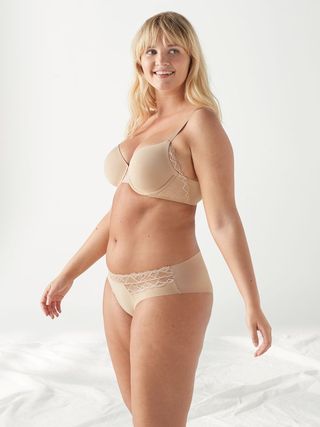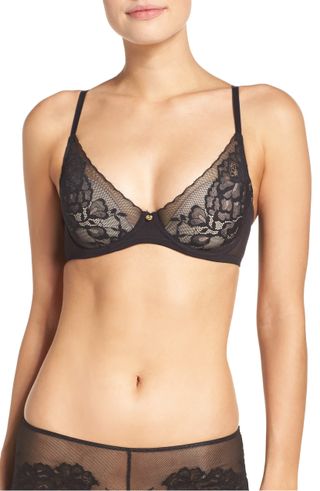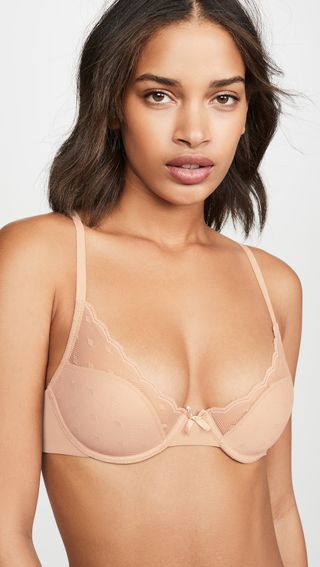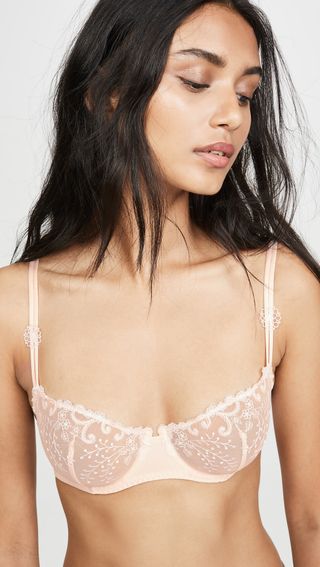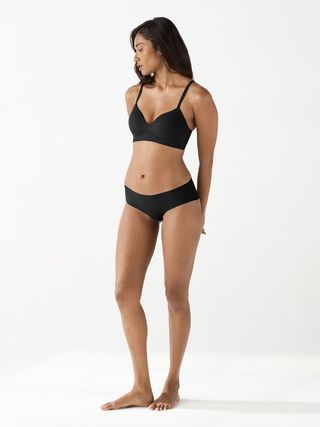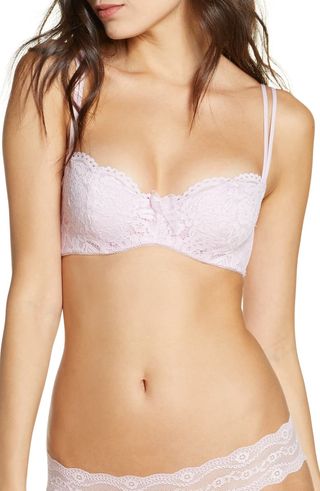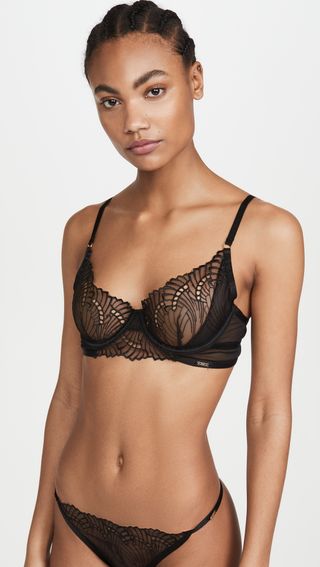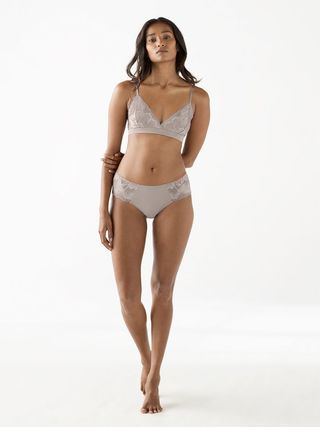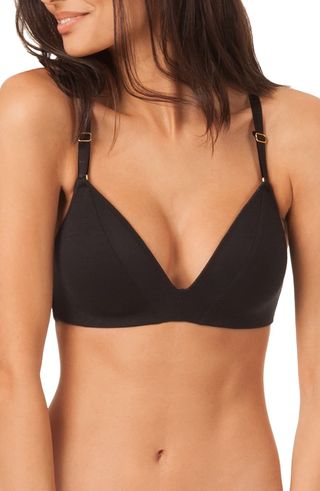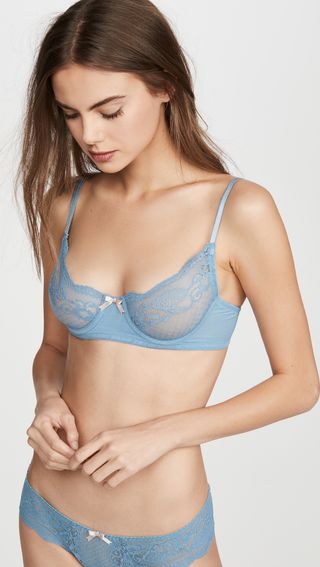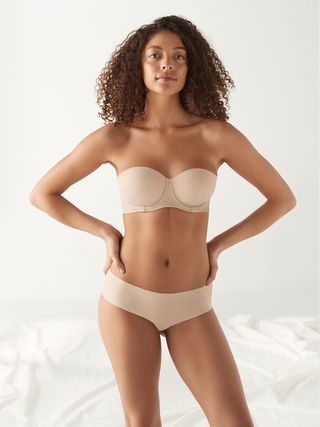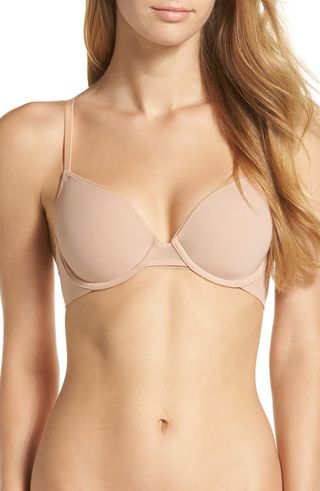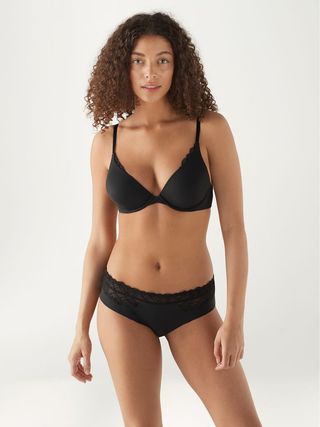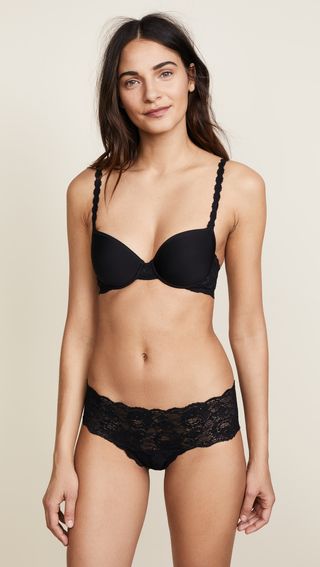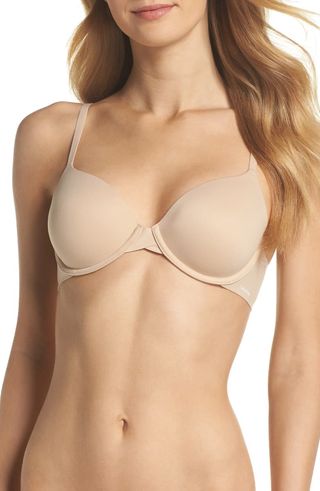How to Measure Your Bra Size in 5 Easy Steps

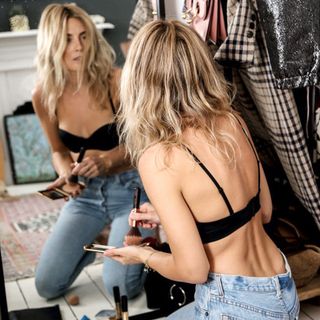
If there’s one experience women find universally frustrating, it’s how to measure your bra size accurately. It doesn’t matter what size you think you wear—everyone has trouble finding a bra that properly supports, lifts, and fits. As it turns out, there’s a reason for that.
Michelle Lam, founder and CEO of lingerie company True&Co.—an online boutique—reveals the one thing that causes many women to choose the wrong bra size: imprecise cup sizing. It’s a misconception that a bra’s cup size actually measures the full size and shape of your breast.
"Not many people know this, but when you talk about the cup size of a bra, it’s really just the horizontal width between the underwires,” Lam says. "This whole area that’s actually the most 3D part of the breast is completely uncharted territory. That’s why the A, B, C, and D cups don’t actually mean anything. It’s been the same system since 1937.”
A Revolutionary Quiz:
To resolve the issue, Lam founded True&Co. with the missions of selling bras for women, by women, and gathering the data needed to design and develop a well-fitting bra. She and her team created the fit quiz, the first of its type, to measure bra size and truly understand breast shape—by asking women to simply fill out a 15-query questionnaire, no measuring tape required.
Once You’ve Found Your Size:
"We’ve collected over seven million data points about a woman’s body and identified more than 6000 different body types over the last two years,” Lam says. "Our whole goal is not to put you in a certain band or cup size; it’s really about when you look in the mirror, do you feel transformed into the most beautiful version of yourself?”
Her solution: the site’s True Spectrum bra sizing system. Instead of limiting you to a band and cup size, the system takes into account the actual shape of your breast when measuring your bra size. It even accounts for how your breasts sit on your chest, and it recommends what standard size bras correlate to your Spectrum size from the other brands available on True&Co.
After shoppers take the True&Co. fit quiz, answering the questions about how their bras fit you as honestly as they can, they’re assigned a color—anything from citrine to violet to sapphire—and a size ranging from small to large. The goal is to find a bra size that considers not only the band and cup size but the shape and weight of the breasts as well.
While True&Co.’s sizing system is really handy because it doesn’t require a tape measure or any other such tools, there are ways you can measure your perfect bra size in the comfort of your own home.
Scroll down to find out how to determine your own perfectly fitting bra in five steps and shop some of our favorite picks while you're at it.

Make sure to use a tape measure that’s flexible; if it’s made of fabric, all the better. If you don’t have one, they’re pretty easy to find at a drugstore, department store, or any kind of fabric shop.

It’s important when you’re measuring your bra size to get as accurate a measurement as possible. The most efficient way to do this is to ensure that you wear the bra you deem to be your best-fitting. It should be snug but not too tight, and your breasts shouldn’t be sagging or busting out. A good rule of thumb: Your nipples should align about with the middle of your upper back.

As we mentioned above, most bras are sized via band and cup. For example, a 36B bra is a bra with a band measurement of 36 and a cup measurement of B. But as Lam mentioned, the band size often isn’t precisely the measurement of the circumference of your torso. Here’s the right way to measure your band size: Using your tape measure, measure around the trunk of your torso right where the bottom part of your bra clasps. Using a mirror, make sure the tape is firm and exactly across the middle of your back (not at a diagonal, which can improperly alter the measurement).
See where the end of the tape meets at the front of your torso. This is your actual torso measurement. Write this number down. Every now and then, your band size actually is equivalent to your literal torso measurement. But if your torso measures, for example, 33 inches, you will probably need to round up to a 34 for your band size.

Compared to measuring your bust, determining your band size is fairly straightforward. As we learned from Lam above, cups are much more challenging to correctly size. Place the tape so it’s straight across your back (you can use a mirror to help you do this) and measure your breasts at the fullest point, which is about where your nipples are. Take note of that number.
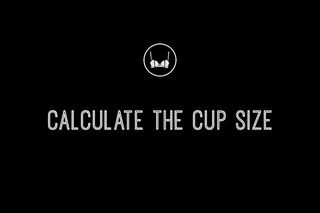
You might think you’re done, but here’s the catch: Your bust size and your cup size aren’t actually the same number! The bust size is the number you just saw on the tape; the cup size is the difference between your already measured band size and your bust size. Here’s a quick chart of the typical size differences and how they equate to cup sizes. (If your bust size is less than 1 inch bigger than your band size, you’re a cup size AA.)
1-inch difference = A
2-inch difference = B
3-inch difference = C
4-inch difference = D
5-inch difference = DD
Voilà! (If you’re still confused, you can try the online fit quiz offered by True&Co..)
This post was published at an earlier date and has been recently updated.

Hailing from the heart of the South and cutting her teeth on the mean streets of New York, Meghan has six years of experience covering fashion, style, celebrities, culture, and human behavior. A longtime devotee of rap music, tacos, and generally perfect weather, she is excited to put down roots in Los Angeles. Her top three style staples are a good pair of cutoff shorts, virtually any kind of colorful digi-print, and a solid set of shades.
